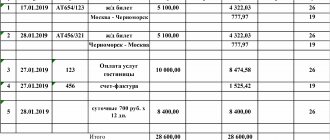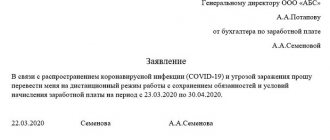What is offset and when is it acceptable?
Expert opinion
Novikov Igor Timofeevich
Legal consultant with 6 years of experience. Specializes in the field of civil law. Law teacher.
Essentially, this is a legal way to get rid of debt. Most often, this is a regular exchange of materials, services, etc. If there are difficulties with finances, organizations have to negotiate among themselves on an equivalent exchange.
However, this is not a simple exchange. The settlement procedure is quite complex.
This is a whole complex of operations that allow you to repay the debt and correctly display the transaction in accounting. Representatives of accounting, household, supply, financial and legal departments take part in drawing up the act.
The key to a correctly drawn up document is close and competent cooperation of all the listed departments.
If the liabilities relate to funds , they can be specified in any currency. Although many organizations transfer the amount of debt into a currency more convenient for settlements.
When offset is not allowed
There are situations when the law prohibits the execution of mutual settlements, which means drawing up a corresponding act. This includes the following situations:
- the debt accumulated during the collection of alimony;
- the obligation period has expired;
- the debt arose for compensation for damage to health;
- one of the parties is declared bankrupt;
- heterogeneity of obligations;
- use of different currencies;
- in any other situations that violate the law.
It is worth noting that this act is not always a bilateral document. There are situations when three or more parties take part in mutual settlement.
As a rule, this may be necessary in the case when all counterparties provide each other with the same type of services. Moreover, they all have a mutual connection.
In this case, the following information must be entered into the document:
- data from documents that prove the provision of mutual services;
- the amount of debt of each party at the time of signing the act;
- if the debt is not repaid in full, the amount of debt relief for each counterparty is indicated;
- the amount of debt that remains with each party to this transaction.
When is offset possible?
Offsetting counterclaims is a way of terminating (in whole or in part) already existing mutual obligations. 410 of the Civil Code of the Russian Federation.
The amounts of mutual debt very rarely coincide; usually the debt of one party is greater than the debt of the other. Then offset is made for the smaller amount. And the party whose debt was greater will have part of the obligation remaining unpaid.
Settlement of obligations is possible only if the following conditions are met.
Uniformity of counter debts
Requirements are considered homogeneous when they have the same subject and can be compared. Let's say that monetary claims expressed in one currency are homogeneous. 7 Information letter of the Presidium of the Supreme Arbitration Court dated December 29, 2001 No. 65. For example, one party has a debt to pay for work performed, and the other has a debt to repay the loan, while each party owes the other money, which means that such obligations may be credited.
The courts consider it possible, for example, to set off claims for payment of the customer's debt for work performed and for payment of a penalty for the contractor's violation of deadlines for completing work, because, despite their different legal nature, these claims are monetary, that is, homogeneous. Resolution of the Presidium of the Supreme Arbitration Court of June 19, 2012 No. 1394 /12.
In principle, the parties can agree to set off heterogeneous claims. 4 of the Resolution of the Plenum of the Supreme Arbitration Court dated March 14, 2014 No. 16, let’s say those when the debt of one party is expressed in rubles, and the other in foreign currency. But then the companies need to agree on the rate at which the foreign currency debt will be converted into rubles.
Arrival of the deadline for fulfillment of obligations
At the time of offset, the payment deadline for each claim under the contract must already have arrived. For example, a tenant cannot offset against rental payments the cost of inseparable improvements made at his own expense with the consent of the landlord. And all because the landlord’s counter-obligation to reimburse the cost of these improvements will arise only after the termination of the lease agreement (unless otherwise provided by the agreement). 2 tbsp. 623 Civil Code of the Russian Federation. Although the Supreme Arbitration Court believes that offsetting obligations with unfulfilled deadlines is also possible. 4 Resolution of the Plenum of the Supreme Arbitration Court dated March 14, 2014 No. 16.
If the parties have not established specific terms for repayment of debts in the agreement, then offset can be carried out at any time.
Not long ago, amendments were made to the Civil Code of the Russian Federation, and from June 1, 2015, in cases provided for by law, it is allowed to set off a counterclaim that has not yet come due. 410 Civil Code of the Russian Federation; clause 59 art. 1 of the Law of 03/08/2015 No. 42-FZ.
Prohibition of offset
There are cases when netting is in principle unacceptable, for example:
- <if>the parties have provided for such a condition in the contract;
- <if>offset is expressly prohibited by law (for example, in most cases it is impossible to carry out offset with a foreign partner in foreign economic activity, subparagraphs 4-7, paragraph 2, article 19 of the Law of December 10, 2003 No. 173-FZ);
- <if>the claims have expired the statute of limitations (3 years from the date of occurrence) Art. 411 of the Civil Code of the Russian Federation.
How to correctly draw up an act of offset in 2021
As mentioned, several parties may be involved in a transaction. Naturally, each of them should receive one copy of the act. However, the main and most common option is the participation of two parties in the transaction. Therefore, the act is drawn up in two copies.
There is no need to use any standard form to draw up the act. Therefore, organizations draw up a document using their own template. It is also not prohibited to draw up an act on a regular sheet of paper. For this it is recommended to use A4 format. You can use a computer to enter information, or enter the data by hand.
( Video : “Carrying out netting in 1C Accounting 8”)
Regardless of how many copies the document has, each of them must have a “living” signature of the director of the company. Instead of the manager, this can be done by other employees authorized to sign documents of this kind.
At the request of the parties, stamps can be affixed to the documents. Despite the fact that their use is now not mandatory, many companies continue to use seals.
The document must display the following data:
- information about the parties who came to an agreement;
- information about how the debt was formed;
- list of obligations;
- the final amount of debt.
As appendices to the act, you can use copies of any documents, for example, confirming the fact of the debt and the reasons for its occurrence.
Peculiarities of execution of a unilateral act of offset
Expert opinion
Novikov Igor Timofeevich
Legal consultant with 6 years of experience. Specializes in the field of civil law. Law teacher.
As already mentioned, in certain situations the act can be executed unilaterally. The party who intends to do this must send written notice to the counterparty indicating its intention.
For such situations, it is necessary to use registered mail with notification. This is how the sender will have in hand a document confirming that the addressee received the letter.
If the dispute is subsequently considered in court, such a notice will become essential evidence.
How to reflect netting in accounting
Now it’s time to find out what tax consequences await the company when offsetting mutual claims.
VAT. The offset does not affect VAT. That is, on the day of offset there is no need to adjust either the amount of VAT payable accrued on the date of shipment of goods (performance of work, provision of services) or the amount of deductions sub. 1 clause 1 art. 167, paragraph 2 of Art. 171, paragraph 1, art. 172 of the Tax Code of the Russian Federation.
Problems with the deduction should not arise in the case where you were given an advance payment for upcoming supplies of goods (work, services), from which you paid VAT to the budget, but subsequently you did not sell the goods (work, services), and the advance was credited on account of the counter obligation. 23 Resolution of the Plenum of the Supreme Arbitration Court of May 30, 2014 No. 33; Letter of the Ministry of Finance dated September 11, 2012 No. 03-07-08/268.
Income tax. There will be no income tax consequences for you when making an offset. You will reflect the proceeds from the sale of goods (work, services) to your counterparty and the costs of purchasing goods (work, services) from him in tax accounting even before the offset. 3 tbsp. 271, paragraph 1, art. 272 of the Tax Code of the Russian Federation. And the fact of repayment of debt for goods sold (work, services) is not taken into account when reflecting income and expenses.
USNO. For simplifiers, the date of recognition of income is not only the day the money is received, but also the day the debt is repaid in another way. 1 tbsp. 346.17 Tax Code of the Russian Federation. Offsetting is that very different method. That is, on the basis of an act (agreement, application) of offset, you need to reflect income in the amount of the repaid debt of the counterparty. At the same time, the goods (work, services) you purchased will be considered paid (also for the amount of the repaid debt), which means that one of the conditions for recognizing expenses under the “income-expenditure” simplified tax system is met. 2 tbsp. 346.17 Tax Code of the Russian Federation.
Accounting. Income from the sale of goods (works, services) and expenses for their purchase should be reflected in your accounts as usual. As a result, you, as a buyer of goods (works, services), will have accounts payable (balance on the credit of account 60 “Settlements with suppliers and contractors” or account 76 “Settlements with various debtors and creditors”) for their payment. At the same time, when selling goods (works, services), you generate accounts receivable (the balance in the debit of account 62 “Settlements with buyers and customers”).
On the date of offset, make a debit to account 60 “Settlements with suppliers and contractors” (account 76 “Settlements with various debtors and creditors”) – credit account 62 “Settlements with buyers and customers” for the amount of less debt. Thus, receivables and payables will be fully or partially repaid.
***
Pay attention to one more important nuance. If you decide to set off unilaterally, you need to take into account that subsequently you will not be able to refuse your decision. 9 Information letter of the Presidium of the Supreme Arbitration Court dated December 29, 2001 No. 65.
Instructions for drawing up a netting act in 2021
When drawing up the act, it is recommended to adhere to the standard structure of such documents:
- The “cap” is filled in at the top. The essence of drawing up the act is indicated here. It is also necessary to note the city in which the organization drawing up the document is registered. The date of registration is noted.
- Below is information about the parties. Their legal form, passport details and position of managers or other responsible employees are noted.
- The text indicates the regulation, charter or other document on the basis of which the manager takes his position.
- Then information is entered about the contracts on the basis of which the debts arose. The amounts of mutual debts must be indicated not only in numbers, but also in words.
- Next, you need to write that the parties mutually agree to such repayment of debts, and accordingly, do not have any claims against each other.
- It is imperative to note whether this is a partial or full offset. If the debtor agrees to pay the balance, this must also be stated. The period during which he must transfer the specified amount is also indicated.
- The final stage of filling out the document is affixing signatures. You need to write the manager's name, position and signature with a transcript.
Sample act of mutual settlement between organizations
What errors might there be?
In order for an act to have legal force, no mistakes must be made when drawing it up. The most common of them are:
- Not all numbers are indicated, or the column intended to indicate VAT is missing;
- The cost is indicated only in numbers, although words are also required;
- Lack of links to documents that confirm the occurrence of debts;
- The act does not indicate that the parties agree to repay the debt in this particular way;
- Many people forget to note whether all or part of the debt is repaid;
- If the debt is not fully repaid, the date by which the debtor undertakes to repay it in full is not indicated;
- Responsible persons are indicated without position;
- There are no transcripts of the signatures.
_____________ "__" ________ 20____
______________, represented by _______________, acting___ on the basis of _________________, hereinafter referred to as "Party 1", on the one hand, and _________________, represented by ____________, acting___ on the basis of ________, hereinafter referred to as "Party 2", on the other hand, referred to together as " The Parties have entered into this agreement (hereinafter referred to as the Agreement) in accordance with Art. 410 of the Civil Code of the Russian Federation about the following.
SUBJECT OF THE AGREEMENT
1.1. The subject of the Agreement is _________________________ (indicate full/partial) termination of counter-similar claims of the Parties specified in clause 2.1 of the Agreement by means of offset.
1.2. The amount of offset of similar counterclaims under the Agreement is ______ (__________) rubles, including VAT _________ (__________) rubles.
OBLIGATIONS OF THE PARTIES
2.1. Information on mutual claims and debt of the Parties as of “___” __________ 20__.
2.2. The parties came to an agreement to offset mutual homogeneous claims specified in clause 2.1 of the Agreement in the amount of ________ (________) rubles, including VAT _______ (_________) rubles.
2.3. After the offset of mutual homogeneous claims under the Agreement
— the balance of debt of Party __ to Party __ as of “___” ___________ 20__ is ______ (_________) rub., including VAT _____ (_________) rub.
— the mutual debt of the Parties has been repaid in full.
CONFIDENTIALITY
3.1. The Parties undertake not to disclose any information related to the Agreement or its execution without the prior written permission of the other Party, except in cases where the provision of information is mandatory in accordance with the legislation of the Russian Federation.
3.2. The Parties take all necessary measures to ensure that their employees, agents, successors, without the prior consent of the other Party, do not inform third parties about the details of this Agreement.
DISPUTE RESOLUTION
4.1. All disputes and disagreements that may arise between the Parties on issues that are not resolved in the text of this Agreement will be resolved through negotiations.
4.2. If controversial issues are not resolved during negotiations, disputes are resolved in the manner established by the current legislation of the Russian Federation.
If it is impossible to resolve these disputes through negotiations, the dispute will be considered in ________________________________________ (the name of the court considering the dispute is indicated).
FINAL PROVISIONS
5.1. In all other respects that are not provided for in the Agreement, the Parties are guided by the current legislation of the Russian Federation.
5.2. Any changes and additions to the Agreement are valid provided that they are made in writing and signed by duly authorized representatives of the Parties.
5.3. All notices and communications under the Agreement must be sent by the Parties to each other in writing.
Messages will be considered duly executed if they are sent in one of the following ways: by registered mail, by email with confirmation of receipt, by telegraph, teletype, telex, telefax or delivered personally to the legal (postal) addresses of the Parties with receipt against signature by the relevant officials .
5.4. The Agreement comes into force from the moment it is signed by the Parties.
5.5. The Agreement is drawn up in two copies having equal legal force, one copy for each of the Parties.
Sometimes counterparties are faced with the question of conducting mutual offset transactions. For example, if two legal entities have entered into agreements with each other (for example, agreements for the provision of legal services), according to which they are obliged to perform certain actions in relation to each other, then counter obligations can be offset.
In accordance with Article 410 of the Civil Code of the Russian Federation, obligations can be terminated either in full or in part, taking into account a counterclaim of the same type, the time period for which has either already arrived, or its period is not specified or is determined by the date of demand. For offset, an application from one of the counterparties under the agreements is required.
If the other party agrees, then an act of offset of claims is drawn up.
Cases when offset of claims is not possible in accordance with the law
1. If, at the request of one person, the claim is subject to a statute of limitations and this period has expired.
2. When compensating for harm caused to the personal health or life of an individual.
3. When collecting alimony.
4. With lifelong maintenance, etc.
If this does not contradict the existing agreements between the parties, then, in the event of an assignment of the right of claim, the debtor has the right to set off against the claim of the new creditor his counterclaim against the original creditor. This offset is made if the claim arose on the basis that existed at the time the debtor received the notice of assignment of the right of claim, and the term of the claim came before its receipt, or this period is not specified or is indicated by the moment of the claim.
Must be observed when drawing up the act
Firstly , obligations must be only between the parties to the agreements in question; if the demand is made by a third party that is not participating in these transactions (is not a party to the agreements within the framework of which offset is carried out), then drawing up this act is impossible.
Secondly , the act must indicate only homogeneous claims, for example, monetary claims and claims of a non-material nature are not subject to offset, since in this case the claims will be of a counter nature, and therefore cannot be offset in the act.
Thirdly , the parties have the right to make the necessary mutual offset only of those obligations (demands), the calendar deadline for fulfillment of which has already arrived in accordance with the contracts under study. Such a period must be specified in the contracts, otherwise the debt obligation of one party is recognized as arising from the moment when the other party fulfilled its obligation under the contract.
In this case, the deadline for fulfilling obligations must pass.
It must be remembered that in accordance with the legislation of our country, offset of both full mutual obligations of the parties and their partial repayment is allowed. In this situation, the act must indicate the smallest amount of claims of one of the parties and a similar amount of claims of the other party.
Offsetting act
The entire form of the netting act is in the attached file.
- What is an act of mutual settlement between organizations?
- How to draw up an Act of Settlement?
- Instructions for filling out the Settlement Certificate 2021
- Peculiarities of execution of a unilateral act of offset
Sometimes there are situations when mutual loan obligations arise between organizations that need to be repaid. For this purpose, a special document was invented that allows you to write off the obligations of both parties - an act of mutual settlement between organizations.
Application for offset of claims
The obligations of the parties are terminated in whole or in part on the grounds provided for by the Civil Code of the Russian Federation, other laws, other legal acts or an agreement (clause 1 of Article 407 of the Civil Code of the Russian Federation).
So, in particular, obligations can be terminated by fulfillment (Article 408 of the Civil Code of the Russian Federation), provision of compensation (Article 409 of the Civil Code of the Russian Federation) or as a result of debt forgiveness (Article 415 of the Civil Code of the Russian Federation). One of the most common ways to terminate obligations is to set them off (Article 410 of the Civil Code of the Russian Federation). In general, counterclaims of the same type are subject to full or partial offset, the deadline for which has come, is not specified, or is determined by the moment of demand. Homogeneity of claims means, for example, that the parties owe each other money. Let's say one party is for the goods supplied, and the second is for the loan received. In this case, offset, in particular, is not allowed against claims for compensation for harm caused to life or health, or claims for which the statute of limitations has expired (Article 411 of the Civil Code of the Russian Federation).
At the same time, in accordance with the norms of civil law, an application from one party is sufficient to carry out an offset. At the same time, for the offset to take place, it is necessary that the application for offset prepared by one party be received by the other party (clause 4 of the Information Letter of the Presidium of the Supreme Arbitration Court dated December 29, 2001 No. 65). And from the moment of confirmation of receipt of the application, the offset can be considered completed. You can confirm the receipt of the application by handing it over to the other party in person. To do this, the offset application form usually includes a space for the other party to indicate receipt of the application. Or the application can be sent by registered mail with acknowledgment of receipt.
But in order to avoid possible disputes about the fact of offset and its date, it is most common for the parties to draw up a joint agreement on the offset of mutual claims, which will already contain the signatures of all parties to the offset.
What is an act of mutual settlement between organizations?
An act of mutual settlement is a document that serves to write off mutual debts between different enterprises. It is used mainly between small and medium-sized businesses when one or both organizations are experiencing financial difficulties and agree to make a certain exchange.
This allows you to get a number of advantages, including:
- saving time on drawing up various documentation;
- no bank commissions for completed transactions;
- repayment of long-term debt to a counterparty.
The procedure for drawing up and applying the act of mutual settlements is regulated by the Civil Code of the Russian Federation in Article 410.
A prerequisite for drawing up this document is that mutual requirements must be of a homogeneous nature.
At the same time, monetary obligations can be listed in the currencies of different countries; for convenience, they can be converted into the most convenient one. In addition, these obligations must be documented. There are some cases when mutual settlements are prohibited by law:
- the debt arose in the case of alimony collection;
- obligations arose during the performance of lifelong maintenance obligations;
- obligations arose when funds were contributed to the authorized capital fund;
- debt cannot be used after the expiration of the obligation;
- debt arises when compensating for damage caused to a person’s health or life;
- in other cases provided for by contractual obligations between organizations, or in cases subject to prohibition in accordance with the legislation of the Russian Federation.
According to the letter of the law, netting is possible at the request of one of the parties, however, in practice this usually happens by mutual desire:
- completed using one of the following documents:
- agreement on offset of claims;
- mutual debt reconciliation act;
- netting agreement.
When the amount of debt is settled, a mutual settlement act is signed between the organizations.
Sample agreement on offset of funds
In addition to a letter or statement of offset, Russian business entities have the right to draw up an agreement on the offset of monetary obligations.
The requirements for the content of such a form do not differ significantly from the wording of the application drawn up by one of the parties to the relationship.
It should be noted that the official sample of the offset agreement has not been put into circulation by law.
Therefore, the parties can develop an arbitrary document, providing for essential conditions. We recommend using the sample provided at the link below.
cash offset agreement
In conclusion, it should be noted that the preparation of documents with the help of which the offset is drawn up should be approached with all responsibility. The presence of inaccuracies or errors, as well as failure to include mandatory information in the text, may result in the invalidity of the offset.
How to draw up an Act of Settlement?
The legislation does not define a strict form; it is drawn up in free form, taking into account certain requirements, in two copies for each of the parties involved. If more than two parties are involved in mutual settlements, then the number of copies must be equal to the number of participants in the act.
Each copy must contain the signatures of the managers or their substitutes of all parties involved.
If desired, managers can affix a seal (from 2021, all legal entities are exempt from the obligation to have a seal in their organization). But you need to know that many government organizations, including the Tax Service, still require certification of all documents.
In addition, the legislation establishes the presence of the following mandatory details:
- the reason for the occurrence of obligations (it is enough to indicate the details of the relevant documents);
- details of organizations that participate in the mutual settlement agreement;
- the amount of debt in digital and written terms;
- list of credit obligations that have arisen.
Copies of documents that indicate the debt has arisen must be attached to the act.
Application for offset of counterclaims of the same type: sample
There is no mandatory application form for the offset of mutual claims. Therefore, an organization can develop such a form independently. The application shall indicate information about the parties to the offset (the applicant and his counterparty), the claims being offset and their amounts. An application is drawn up in the same number of copies as the number of parties participating in the offset.
A sample of filling out an application for offset of homogeneous claims is given below.
Prev. / Next Download an application for offsetting mutual claims (sample form) Only subscribers of the “General Ledger” magazine can download document forms.
- I am a subscriber: electronic magazine printed magazine
- I'm not a subscriber, but I want to become one
- I want to download document forms for free and try all the features of a subscriber
Peculiarities of execution of a unilateral act of offset
Expert opinion
Novikov Igor Timofeevich
Legal consultant with 6 years of experience. Specializes in the field of civil law. Law teacher.
According to Russian legislation, it is not prohibited to offset mutual obligations at the request of one party. Thus, mutual obligations can be repaid unilaterally.
To do this, you must first notify your partners about this in writing. To do this, the initiator must send a registered letter to the other party with a notice inside.
This is done in order to subsequently have documentary evidence in the form of a notification of receipt as evidence.
It will definitely come in handy in the event of controversial situations and litigation.
The act of mutual settlements is a simple document and significantly facilitates the work of employees and interaction between organizations. It has many benefits and is designed to make life easier for businesses in general. It is easy to put together and has little nuance.
Unilateral offset
Related publications
Unilateral settlement is permitted by Art. 410 of the Civil Code of the Russian Federation. For this purpose, the legislator has provided for the procedure for implementing the procedure through a written statement from one of the interested parties. To initiate such actions, it is necessary to ensure that the amounts of debts comply with several criteria established by civil law:
- business entities interested in the transaction have contractual relations, they can document them;
- according to accounting data, both participants, under different agreements, act in relation to each other simultaneously as a creditor and a debtor;
- obligations have a single measure (can be considered homogeneous);
- for counter debts the payment deadline has arrived or it was not fixed in the contracts.








